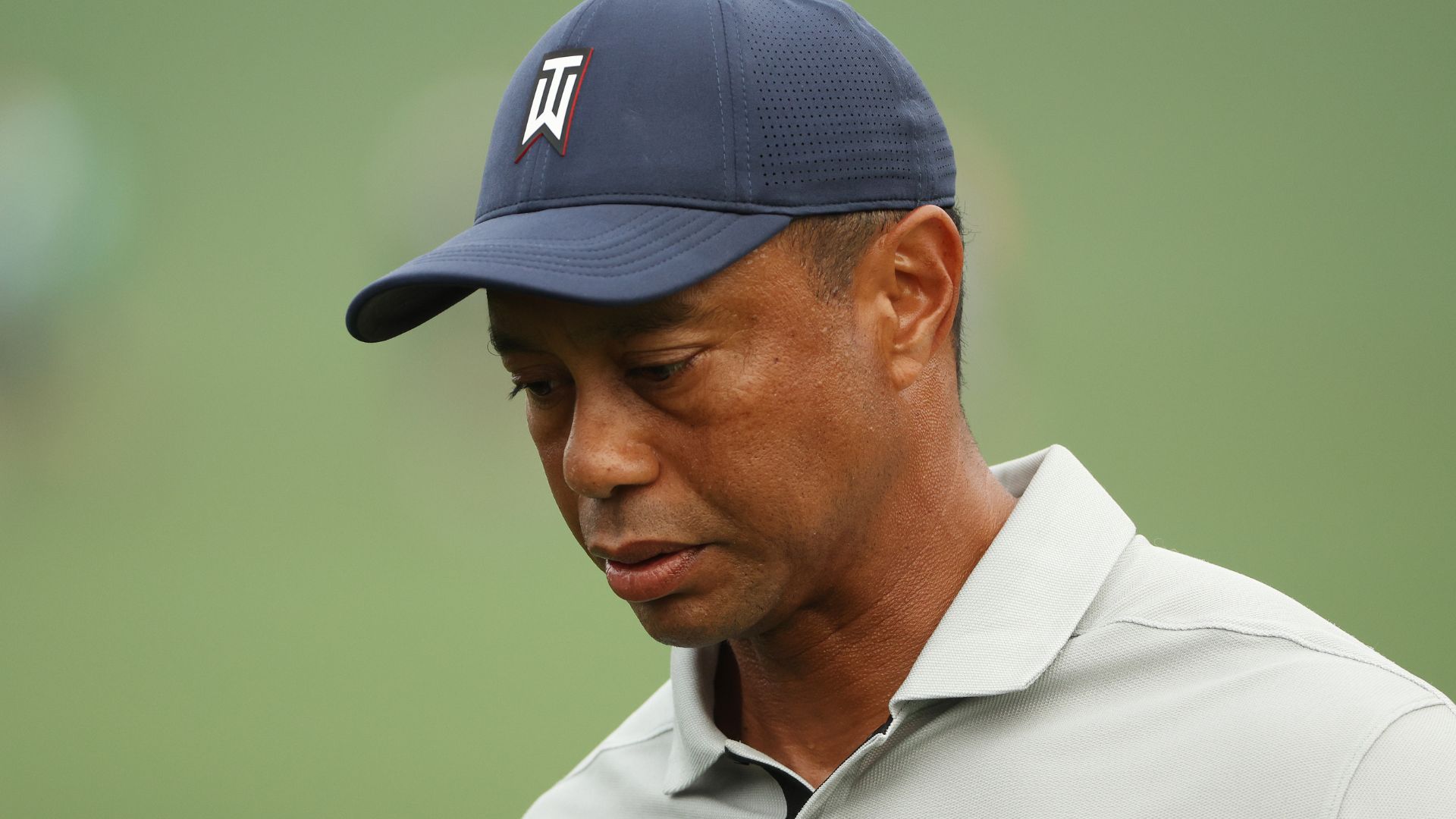Unsure how many Masters he has left, Tiger Woods will rely on knowledge for one last miracle

AUGUSTA, Ga. – Tiger Woods is one year into his new competitive reality, and for a living legend who has often stretched the boundaries of what’s possible, he now seems resigned to his limitations.
He has learned that he can’t practice like he used to, when he’d endure those mythical marathon range sessions to perfect a swing that he knew would be dependable when it mattered most.
He has learned that he can’t log the regular-season starts that he wants, the buildup for events now leaving him too broken down to continue. And he has learned, with his lower right leg howling, that it’ll take a Herculean effort to compete against today’s top players that are younger, healthier and, at least right now, better.
“I can hit a lot of the shots,” Woods said Tuesday at Augusta National, “but the difficulty for me is going to be the walking going forward. It is what it is. I wish it could be easier.”
Full-field tee times from the 87th Masters Tournament
For however many years Woods has left, the Masters and Open Championship will represent his best chances to add major No. 16. They’re the tournaments that are most reliant on course history, on grit and guile, on tactical shot-making and sharp decision-making that remain his forte at age 47.
Never is that advantage more pronounced than here at Augusta National, where Woods is making his 25th career start. On Tuesday morning, he spoke movingly about his long-ago appearances here at the Masters, where as a young pro he was guided around by Raymond Floyd and Fred Couples, by Seve Ballesteros and Jose Maria Olazabal. They showed him where to miss, and why. They showed him how to chip with 4- and 8-irons. They showed him how to navigate the complex greens by imparting different curvature and spin.
That’s part of the magic of the Masters, tidbits of information being passed down through generations, and now it’s Woods’ turn to return the favor, showing Rory McIlroy, Justin Thomas and even 20-year-old Masters debutant Tom Kim a few tips and tricks that he’d learned on his way to five green jackets.
Kim didn’t even need to ask Woods questions – he simply observed. If Woods was chipping from a certain area – say, long and left of the 15th green – he took a mental note and tried a few nipped pitches from there, too.
“He has years and years of knowledge here, some success,” Kim said, “so I’m pretty sure there’s a reason why he’s there.”
Maybe Woods feels a responsibility to share his insights, just as Freddie and Ollie and Seve did with him. But Woods’ best chance is to withhold those nuggets for himself. Against this field, it’s only his advantage. Woods no longer has the luxury of peaking physically, the way Scottie Scheffler, Jon Rahm and McIlroy have been building toward this week. At this age, with his fused back and a shattered right leg, his condition is all relative, somewhere between bad and fine, depending on the day.
“If he didn’t have to walk up these hills, I’d say he’d be one of the favorites,” McIlroy said. “You watch him on the range, and you watch him hit chips and putts, and he’s got all the aspects of the game that you need to succeed around this place. It’s just the toll it takes on his body to compete over 72 holes.”
With a hint of melancholy, Woods agreed. “It has been tough and will always be tough. The ability and endurance of what my leg will do going forward will never be the same. I understand that. That’s why I can’t prepare and play as many tournaments as I like, but that’s my future, and that’s OK. I’m OK with that.”
If that sounds like Woods has abandoned any aspirations of winning, if it sounds like he’s merely in a ceremonial role, dispensing knowledge to the kids and then bowing out, well, think again.
“People probably didn’t think I was a threat in 2019 either,” he said, “but that kind of turned out OK.”
A notable difference, of course, is that Woods logged five pre-Masters starts that spring, which came on the back end of a resurgent season in which he contended deep into two majors and claimed the Tour Championship for his first victory in five years. The Masters was an unlikely triumph, yes, but it wasn’t unfathomable. Each week showed undeniable progress.
All Woods has now is what he sees at home, in the privacy of his backyard and in his moments of seclusion at Medalist.
Unwilling (or unable) to play in the last six weeks, he has spent his prep time recreating chip shots in his own practice area, hitting off the most uneven lies he can find at Medalist and replaying the course over and over again in his mind and on the range, altering his shape and trajectory to match the expected hole locations here at Augusta.
“That’s the only way I can compete here,” he said. “I don’t have the physical tournaments under my belt. I haven’t played that much, no. But if there’s one golf course that I can come back, like I did last year, it’s here, just because I know the golf course.”
Last year was a testament to Woods’ stubbornness and toughness, when he made the cut at the Masters just 14 months removed from his horrific crash that nearly cost him his right leg. That he faded badly over the weekend with rounds of 78 mattered little; he called it a “small victory” that he was even able to compete again.
Woods’ game is sharper than at this point last year. His endurance is better, too. He just “aches” a little more, a reminder that his competitive window is closing.
“I don’t know how many more I have in me,” he said.
He’ll soon discover how far all of that hard-earned knowledge can still take him.

